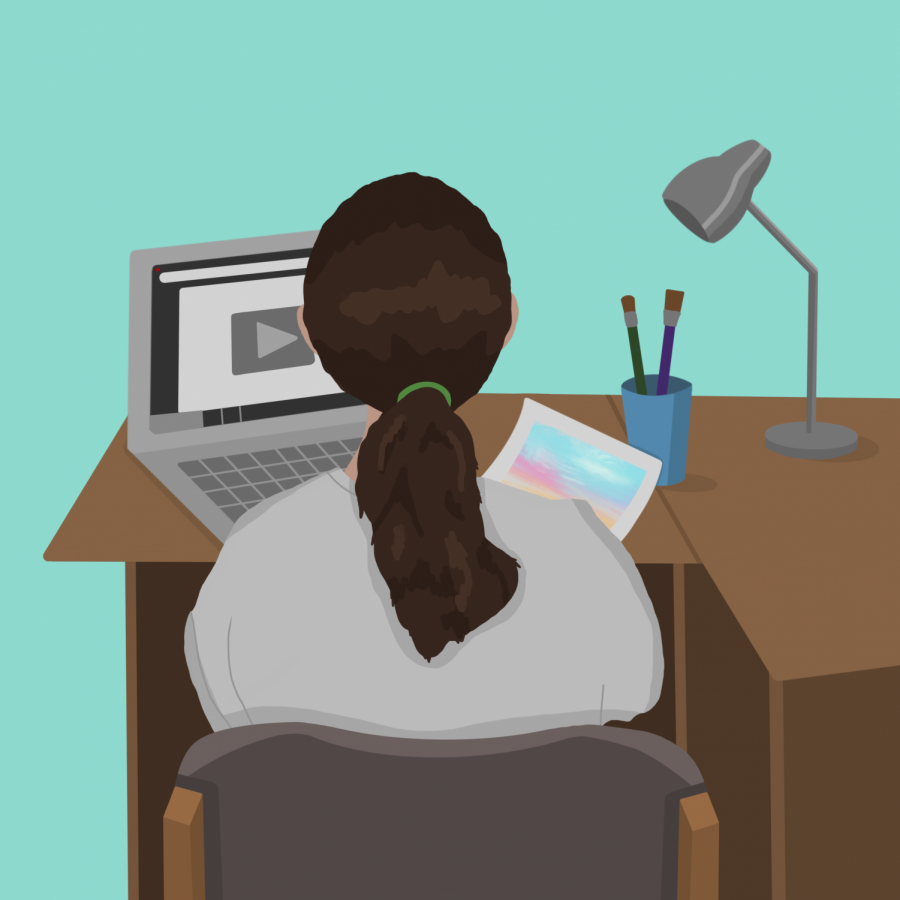Students, professors create art in their bedroom
Mar 1, 2021
Students in art classes at the University represent a key group overlooked with classes becoming virtual. Considering the physical nature of art, students and faculty encountered a lot of difficulty in making art classes fully online. Professors worked to keep things accommodating, and although students recognize this fact, a lot of them feel their classes would be better if in person.
Professors also recognize the importance of in-person art classes. Sydney Vize, graduate student instructor of ART 104, a book-binding sculpture class, explained that there is community learning that comes from being in a physical art studio.
“The big challenge with virtual art is seeing and understanding people’s work,” she said. “Seeing and understanding how a piece of art functions from far away versus having people walk around it and look closely and look far away and kind of interact with the objects like holding it touching it, if we are talking about books as well as the tactile is so important.”
Fides Icalina, senior in FAA, said she understands the experience of fine art versus graphic design classes to be very different. Her digital-art-based classes were not as tough of a transition into online learning as were the fine art studio lab courses.
She said in Spring 2020, “I was in pottery class and then before everybody got sent home there was nothing we could do because no one had the pottery materials, so we ended up writing a paper for the rest of the semester.”
Get The Daily Illini in your inbox!
Fides said she empathized with the concerns of professors, even if she had opinions for areas that can improve. Another issue for students who are taking studio-based fine arts classes is the need for supplies.
Fides found that the professors need to rely on old artistic practices that are more accessible for students versus implementing techniques that require large, bulky supplies that students don’t have access to from their homes.
She explained, “For one class, my teacher came up with a lot of creative solutions, like more rudimentary and old-fashioned printmaking techniques, like ink on paper, but it wasn’t the same.”
Luckily, many professors have found ways to keep the class material engaging despite being virtual. Professor Stacey Robinson of graphic design shifted his classes to reflect social issues and connect them to art. This emphasis was to relate the current events and issues in focus for students.
“I’m teaching my students to build their content ideas in a virtual environment. The second project they have to do is around the ideas of diversity and inclusion for our campus and the School of Art + Design,” he said.
Instructor Vize had never taught the sculpture book-binding course before this semester, so it was built to be virtual. She explained that there was a necessary learning curve for all art instructors as they had to make sure classes were inclusive for all students.
“The synchronous demonstrations over Zoom have actually been working really well mostly because of the scale of bookbinding,” Vize said. “The dry medium for the most part is paper, and the messiest thing we use is glue.”
In transforming the ideas and purpose of his course, Professor Robinson was excited to try out new ideas and processes for virtual learning, as he had wanted to teach a virtual art class for years. Since coming back from his art residency at Harvard, Robinson has begun to understand that professors need to get creative with bookbinding students.
“I can kind of help my students in a way that becomes more personal because of the virtual environment because it has to be, ” he said. “You have the barrier of the screen so to encourage students, you have to be more personable.”






